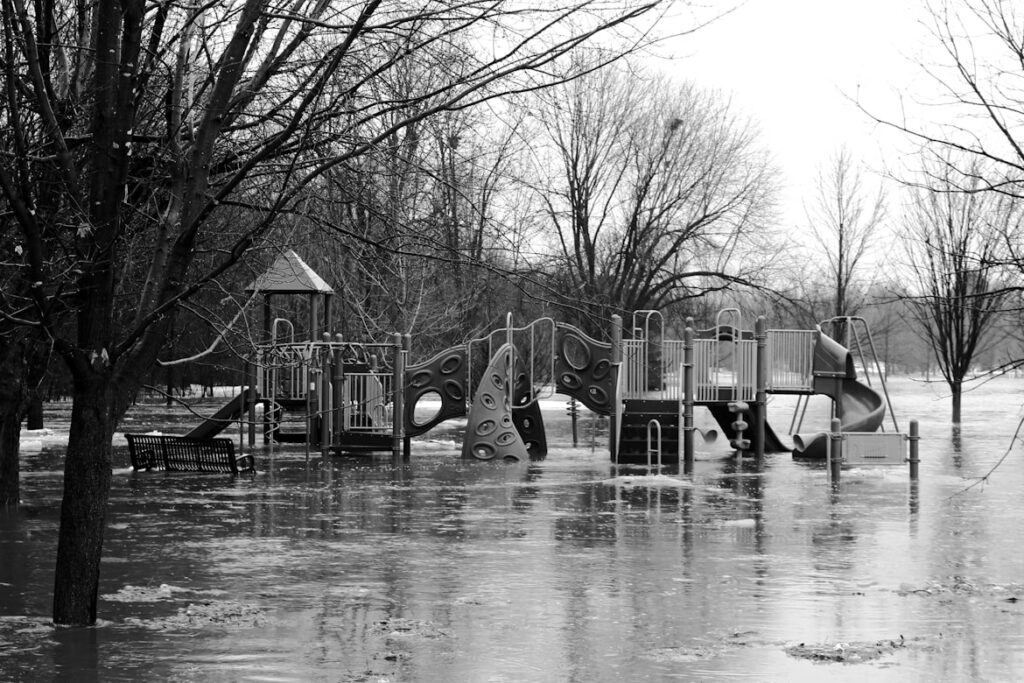The presence of asbestos in Australian schools remains a significant concern for parents, educators, and administrators. Effective asbestos management and regular asbestos inspection are crucial for maintaining safe learning environments and protecting the health of students, teachers, and staff. Understanding the risks, legal obligations, and proper management strategies empowers school communities to make informed decisions about asbestos safety.
The Reality of Asbestos in Australian Schools
Historical Use of Asbestos in Educational Buildings
Many Australian schools built before 1990 contain asbestos-containing materials (ACMs) due to widespread use of asbestos in construction during the mid-20th century. These materials were commonly used in ceiling tiles, wall panels, flooring, insulation, and roofing materials because of their fire-resistant properties and durability.
The legacy of asbestos use means that thousands of Australian schools require ongoing asbestos management to ensure student and staff safety. While asbestos was banned in Australia in 2003, existing materials remain in place in many educational facilities, requiring careful monitoring and professional asbestos inspection.
School buildings constructed during peak asbestos use periods (1950s-1980s) present particular challenges for asbestos management. These facilities often contain multiple types of asbestos-containing materials throughout the building structure, requiring comprehensive assessment and ongoing monitoring.
Common Asbestos-Containing Materials in Schools
Educational facilities commonly contain asbestos in ceiling tiles, particularly in older classroom buildings and administrative areas. These ceiling tiles pose risks when disturbed during maintenance work or building modifications, making professional asbestos inspection essential for renovation planning.
Wall panels and partitions in schools built before 1990 frequently contain asbestos cement sheets. These materials remain safe when undisturbed but require careful asbestos management during any building work or maintenance activities that might cause damage or disturbance.
Flooring materials including vinyl tiles and their adhesives often contain asbestos in older school buildings. Professional asbestos inspection can identify these materials and provide guidance for safe maintenance and eventual replacement when necessary.
Legal Obligations for School Asbestos Management
Regulatory Framework and Compliance Requirements
Australian education departments and school governing bodies have strict legal obligations for asbestos management in school environments. These requirements include maintaining current asbestos registers, conducting regular asbestos inspections and implementing comprehensive asbestos management plans.
The Work Health and Safety (WHS) legislation applies to all Australian schools, requiring systematic identification and management of asbestos risks. School administrators must ensure that all staff, contractors, and visitors are protected from asbestos exposure through proper asbestos management protocols.
State and territory education departments have developed specific guidelines for school asbestos management, building on national WHS requirements. These guidelines typically mandate regular professional asbestos inspection and detailed documentation of all asbestos-containing materials.
Duty of Care to Students and Staff
Schools have a heightened duty of care to protect students, teachers, and staff from asbestos exposure due to the vulnerable nature of the school population. This obligation extends beyond basic legal compliance to encompass comprehensive asbestos management practices.
The duty of care includes providing safe learning environments, ensuring proper asbestos management during maintenance activities, and maintaining transparent communication about asbestos presence and safety measures. Regular asbestos inspection supports these obligations by providing current information about material conditions.
Educational authorities must balance the need for maintaining aging school infrastructure with the imperative to protect students and staff from asbestos exposure. This balance requires professional asbestos management expertise and regular monitoring through qualified asbestos inspection services.
Health Risks and Student Safety Concerns
Understanding Asbestos Exposure Risks in Schools
Asbestos exposure in schools typically occurs when asbestos-containing materials are disturbed during maintenance, renovation, or accidental damage. Effective asbestos management aims to prevent these disturbance events through proper identification, monitoring, and work procedures.
Students and staff face potential exposure risks during activities such as hanging artwork on walls, installing equipment, or during building maintenance work. Professional asbestos inspection helps identify high-risk areas and inform appropriate safety measures.
The health risks from asbestos exposure are particularly concerning in school environments due to the young age of many occupants and the potential for long-term, repeated exposure. Comprehensive asbestos management programs help minimise these risks through proactive identification and control measures.
Long-term Health Implications
Asbestos-related diseases including mesothelioma, lung cancer, and asbestosis can develop decades after initial exposure, making current asbestos management crucial for protecting future health outcomes. The latent period for these diseases means that exposure during school years may not manifest until much later in life.
Children may be more susceptible to asbestos-related health effects due to their developing respiratory systems and longer life expectancy following exposure. This increased vulnerability makes thorough asbestos management and regular asbestos inspection particularly important in educational settings.
The psychological impact of asbestos concerns in schools can affect entire communities, making transparent communication about asbestos management efforts essential for maintaining public confidence in school safety measures.
Asbestos Inspection Requirements for Schools
Professional Assessment and Documentation
Schools require comprehensive asbestos inspection conducted by qualified professionals to identify all asbestos-containing materials and assess their condition. This inspection forms the foundation for effective asbestos management programs and regulatory compliance.
Professional asbestos inspection in schools involves systematic examination of all building areas, including classrooms, administrative spaces, maintenance areas, and external structures. This comprehensive approach ensures that all potential asbestos locations are identified and documented.
The results of professional asbestos inspection must be documented in detailed asbestos reports and asbestos registers that include material locations, conditions, risk assessments, and recommendations for ongoing asbestos management. These reports serve as crucial reference documents for school administrators and maintenance staff.
Frequency and Timing of Inspections
Regular asbestos inspection is essential for maintaining current information about material conditions and supporting ongoing asbestos management decisions. Most education departments require annual inspections or more frequent assessments based on material conditions and building activities.
The timing of asbestos inspection should consider school operational schedules, planned maintenance activities, and building modification projects. Strategic scheduling ensures that inspection results inform asbestos management decisions before potentially disturbing activities occur.
Emergency asbestos inspection may be required following incidents such as water damage, storm damage, or accidental disturbance of suspected asbestos materials. These urgent assessments support immediate safety decisions and inform appropriate response measures.
Specialist Expertise and Qualifications
School asbestos inspection requires specialists with appropriate qualifications, experience, and understanding of educational facility requirements. These professionals must hold relevant certifications and maintain current knowledge of regulatory requirements.
Qualified asbestos inspectors understand the unique challenges of working in occupied educational facilities and can conduct assessments with minimal disruption to school operations. Their expertise ensures accurate identification and appropriate risk assessment of asbestos-containing materials.
The selection of asbestos inspection providers should consider their experience with educational facilities, understanding of school operational requirements, and ability to provide clear, actionable recommendations for asbestos management.
Developing Effective Asbestos Management Programs
Comprehensive Management Planning
Effective school asbestos management begins with comprehensive planning that addresses all aspects of asbestos risk control. This planning process should involve school administrators, maintenance staff, and professional asbestos management consultants.
The asbestos management plan should integrate with broader school safety programs and operational procedures. This integration ensures that asbestos considerations are addressed in all relevant decision-making processes, from routine maintenance to major building projects.
Regular review and updating of asbestos management plans ensures they remain current with changing building conditions and regulatory requirements. This ongoing process supports continuous improvement in asbestos safety measures.
Staff Training and Awareness
Comprehensive staff training is essential for effective school asbestos management. All school personnel should understand basic asbestos safety principles, identification of potential asbestos materials, and reporting procedures for suspected disturbance or damage.
Maintenance staff require specialised training in asbestos management procedures, safe work practices, and emergency response protocols. This training should be regularly updated to reflect current best practices and regulatory requirements.
Administrative staff need training in asbestos management planning, regulatory compliance, and communication strategies. This knowledge supports informed decision-making and effective stakeholder communication about asbestos safety measures.
Contractor Management and Control
Schools must implement robust contractor management systems to ensure all external workers understand asbestos risks and comply with safety requirements. This includes induction procedures, permit systems, and verification of contractor qualifications.
Contractor management for asbestos-containing areas requires specialised procedures including pre-work briefings, monitoring of work activities, and post-work verification. These procedures help prevent accidental asbestos disturbance during maintenance and construction activities.
The selection of contractors for work in schools should consider their experience with asbestos management, appropriate licensing, and understanding of educational facility requirements. Qualified contractors contribute to effective asbestos management through proper work practices and safety procedures.
Communication Strategies for School Communities
Transparent Information Sharing
Effective communication about school asbestos management builds community confidence and supports collaborative safety efforts. Parents and community members deserve clear, factual information about asbestos presence and management measures.
Communication strategies should balance transparency with avoiding unnecessary alarm about well-managed asbestos materials. Professional asbestos inspection reports provide objective information that supports evidence-based communication about school safety measures.
Regular updates about asbestos management activities, including inspection results and improvement measures, demonstrate ongoing commitment to student and staff safety. This proactive communication approach helps maintain community trust and support.
Addressing Parent Concerns
Parents naturally have concerns about asbestos in school environments, particularly regarding potential health risks to their children. Addressing these concerns requires factual information, clear explanations of safety measures, and demonstration of ongoing asbestos management efforts.
Information sessions, written communications, and school website resources can help parents understand asbestos management measures and their effectiveness. Professional asbestos inspection documentation provides credible evidence of safety measures and regulatory compliance.
School administrators should be prepared to discuss asbestos management plans, inspection schedules, and safety procedures with concerned parents. This preparedness demonstrates commitment to transparency and student safety.
Emergency Response and Incident Management
Incident Response Procedures

Schools must have clear procedures for responding to asbestos-related incidents including accidental disturbance, damage to asbestos-containing materials, or suspected exposure events. These procedures should be regularly practised and updated based on lessons learned.
Emergency response procedures should include immediate safety measures, notification requirements, professional assessment protocols, and communication strategies. Quick access to qualified asbestos inspection services supports effective incident response and risk assessment.
Staff training in emergency response procedures ensures appropriate initial actions during asbestos incidents. This training should cover evacuation procedures, area isolation, and notification requirements for both internal and external stakeholders.
Professional Support Services
Schools should establish relationships with qualified asbestos management professionals who can provide emergency response support when needed. These relationships ensure rapid access to expert advice and professional asbestos inspection services during incidents.
Emergency support services may include immediate risk assessment, air monitoring, containment measures, and cleanup coordination. Professional asbestos management providers can coordinate these services and ensure appropriate response measures.
The availability of 24/7 emergency response support provides peace of mind for school administrators and ensures appropriate professional response to after-hours incidents. This support capability is particularly important for boarding schools and facilities with extended operating hours.
Budgeting and Financial Planning
Cost Considerations for Asbestos Management
School asbestos management requires ongoing financial commitment including regular asbestos inspection, maintenance activities, and eventual removal or replacement of asbestos-containing materials. Budget planning should account for these ongoing costs.
The cost of proactive asbestos management through regular inspection and maintenance is typically much lower than reactive responses to incidents or regulatory violations. This cost-benefit relationship supports investment in comprehensive asbestos management programs.
Professional asbestos inspection costs should be considered as essential safety investments rather than discretionary expenses. These inspections provide crucial information for protecting student and staff health while ensuring regulatory compliance.
Funding Sources and Support
Education departments and government agencies may provide funding support for school asbestos management activities including professional inspection, removal projects, and building upgrades. Schools should investigate available funding opportunities and application procedures.
Capital improvement programs often include provisions for asbestos-related work, particularly when combined with building renovation or expansion projects. Strategic planning can coordinate asbestos management activities with other capital investments.
Insurance considerations may affect asbestos management costs, particularly regarding coverage for asbestos-related incidents and claims. Professional asbestos management documentation supports insurance coverage and may reduce premium costs.
Best Practices for School Asbestos Management
Integrated Management Approaches
Effective school asbestos management integrates with broader facility management, health and safety programs, and educational operations. This integration ensures that asbestos considerations are addressed in all relevant decision-making processes.
The integration of asbestos management with planned maintenance schedules, building upgrade projects, and operational changes maximises efficiency and minimises disruption. Professional asbestos inspection supports this integration by providing current information about material conditions.
Collaboration between school administrators, maintenance staff, and professional asbestos management providers ensures comprehensive approaches that address all aspects of asbestos risk management. This collaboration supports continuous improvement in safety measures.
Technology and Innovation
Modern asbestos management can benefit from technology applications including digital documentation systems, inspection scheduling software, and mobile reporting tools. These technologies support efficient asbestos management and improve record-keeping accuracy.
Digital photography and mapping technologies enhance asbestos inspection documentation and support ongoing monitoring activities. These tools help maintain current asbestos registers and facilitate communication with stakeholders.
Innovation in asbestos management techniques, including improved inspection methods and removal technologies, can benefit school safety programs. Staying current with industry developments supports continuous improvement in asbestos management effectiveness.
Regulatory Compliance and Monitoring

Ongoing Compliance Requirements
School asbestos management must comply with evolving regulatory requirements including WHS legislation, education department guidelines, and local council regulations. Regular monitoring of regulatory changes ensures continued compliance.
Compliance monitoring includes regular review of asbestos management plans, inspection schedules, and documentation requirements. Professional asbestos management providers can support this monitoring and ensure alignment with current requirements.
The documentation requirements for school asbestos management include detailed records of inspection activities, maintenance work, training programs, and incident responses. These records support regulatory compliance and provide evidence of due diligence.
Quality Assurance and Continuous Improvement
Quality assurance in school asbestos management involves regular review of procedures, assessment of effectiveness, and identification of improvement opportunities. This process supports continuous enhancement of safety measures.
Regular audit of asbestos management activities ensures procedures are being followed correctly and identifies areas for improvement. External audits by qualified professionals can provide objective assessment of asbestos management effectiveness.
Continuous improvement processes should incorporate lessons learned from incidents, feedback from stakeholders, and developments in asbestos management best practices. This approach ensures that school asbestos management remains current and effective.
Effective asbestos management in schools requires comprehensive planning, regular professional asbestos inspection, and ongoing commitment to student and staff safety. The combination of proper assessment, transparent communication, and proactive management strategies creates safe learning environments while meeting legal obligations.
Parents and administrators must work together to ensure that school asbestos management programs receive appropriate support and resources. This collaboration, supported by professional asbestos inspection and management services, protects the health and safety of entire school communities.
The investment in comprehensive asbestos management, including regular professional asbestos inspection, represents essential protection for students, staff, and the broader school community. This investment in safety supports educational excellence by providing secure, healthy learning environments.
For expert school asbestos management services including comprehensive asbestos inspection and ongoing support, contact Global Asbestos Audits. Our qualified professionals understand the unique requirements of educational facilities and provide tailored solutions that protect school communities while ensuring regulatory compliance.

